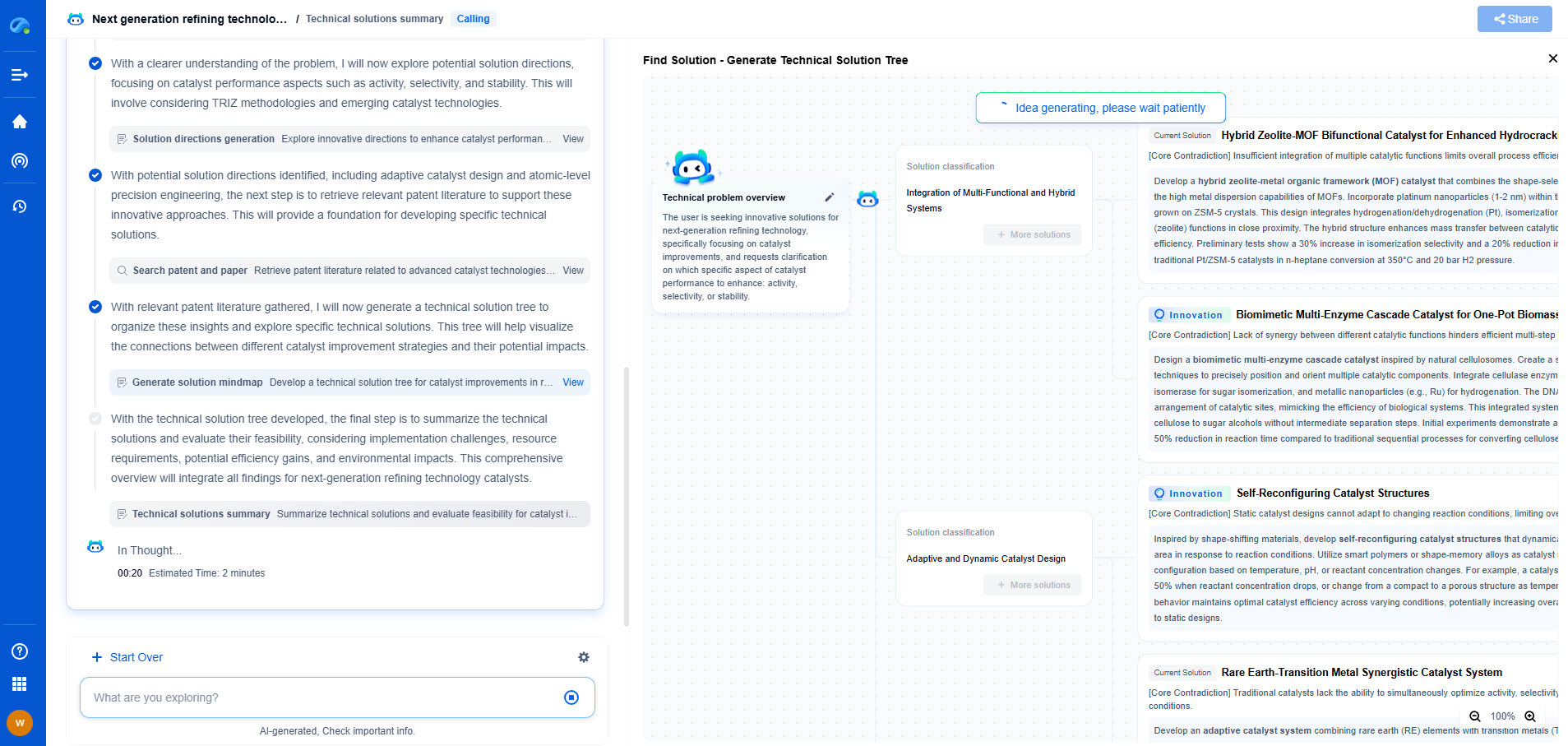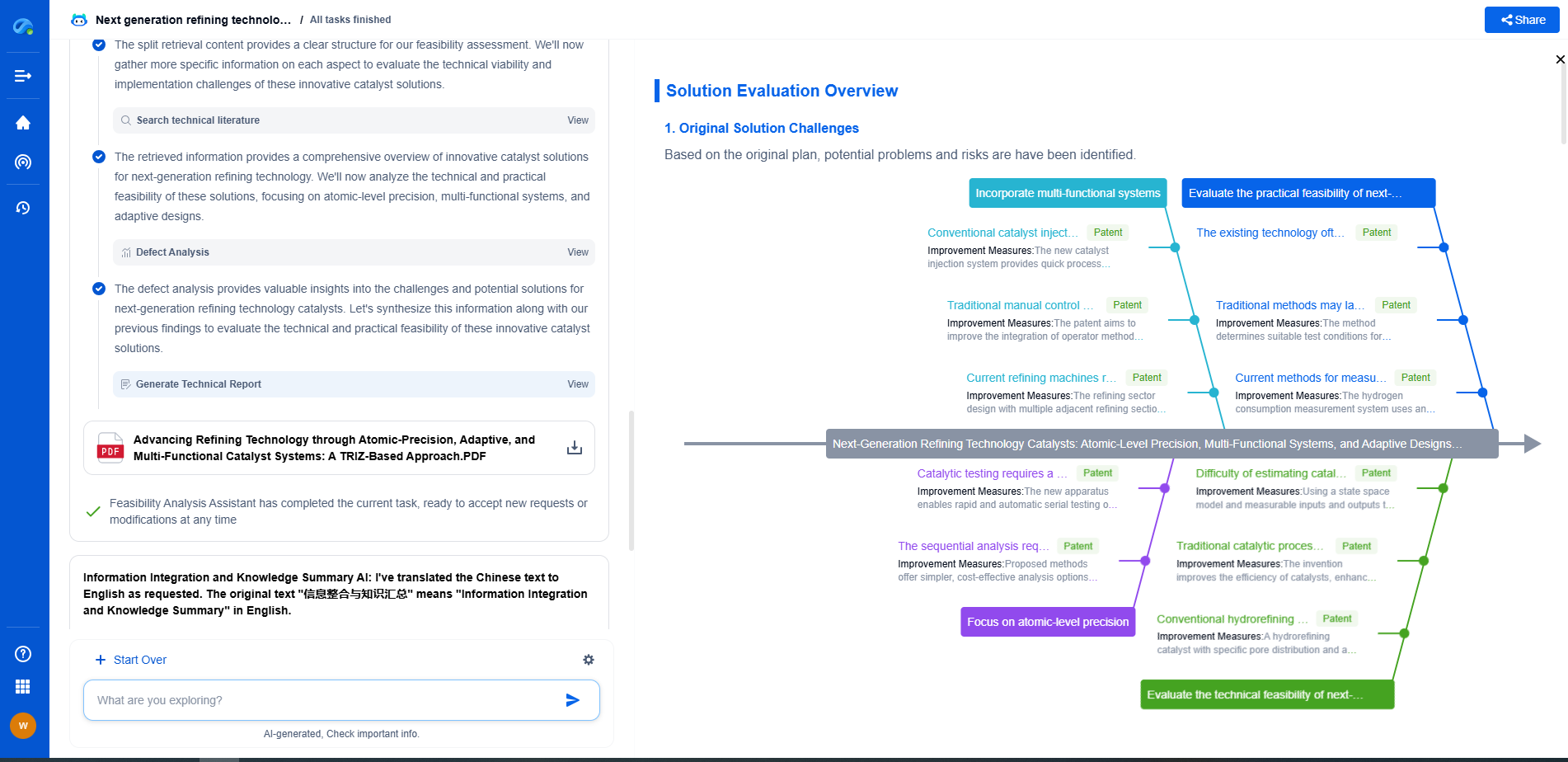Strain and Stress: The Fundamental Relationship in Material Testing
JUL 14, 2025 |
In the world of material science and engineering, the concepts of strain and stress are foundational. Their relationship underpins much of what we do when we test materials, allowing engineers and scientists to predict how materials will behave under various conditions. Let's dive into these concepts, understand their relationship, and see how they play a crucial role in material testing.
Defining Stress and Its Importance
Stress is defined as the force applied to a material divided by the area over which the force is distributed. It is usually measured in Pascals (Pa) or pounds per square inch (psi). When a force is applied to an object, stress is what measures the internal forces that resist the applied load. This concept is vital because it helps predict whether a material will withstand a particular load or fail. It also guides engineers in choosing the appropriate material for specific applications, ensuring safety and performance.
Exploring Strain and Its Role
Strain, on the other hand, is the measure of deformation that a material experiences due to an applied stress. It is a dimensionless quantity, often expressed as a percentage or a simple ratio of the change in dimension to the original dimension. Strain helps us understand how much a material will deform when a specific stress is applied. This deformation can be temporary (elastic strain) or permanent (plastic strain), depending on the material and the magnitude of the applied stress.
The Stress-Strain Relationship
The relationship between stress and strain is typically represented by a stress-strain curve, which is derived from a tensile test. This curve provides essential insights into the mechanical properties of a material, such as its elasticity, yield strength, tensile strength, and ductility. Initially, in the elastic region of the curve, the material deforms temporarily, and the stress is proportional to the strain. This relationship is defined by Hooke's law, which states that stress is directly proportional to strain in the elastic region.
Beyond the elastic limit, materials enter the plastic region, where permanent deformation occurs. The point at which this transition happens is called the yield point, and understanding this is crucial for applications where permanent deformation can lead to failure.
Applications in Material Testing
Material testing involves assessing the behavior of materials under different conditions, and the stress-strain relationship plays a pivotal role in this process. Tensile tests, compression tests, and bending tests are some standard methods used to evaluate how materials respond to stress and strain. These tests help in determining key properties like Young's modulus, which indicates the stiffness of a material, and the ultimate tensile strength, which is the maximum stress a material can withstand before failure.
Engineers use these properties to ensure that materials meet specific requirements before they are used in real-world applications. For example, in construction, materials must be tested to ensure they can withstand loads and stresses without failing. In the automotive industry, materials are tested for their ability to absorb impacts and protect passengers in case of a collision.
The Role of Stress and Strain in Innovation
Beyond traditional applications, understanding stress and strain is also driving innovation in material science. Researchers are developing new materials with unique properties, such as shape-memory alloys and smart materials that respond to environmental changes. The stress-strain relationship in these materials can be more complex, involving factors like temperature and time, but the fundamental principles remain the same.
In conclusion, the relationship between strain and stress is fundamental to material testing and the broader field of engineering and materials science. Understanding how materials respond to stress and strain allows engineers to design safer, more efficient, and more innovative products. As we continue to push the boundaries of material capabilities, this relationship will remain a cornerstone of material testing and development.
From 5G NR to SDN and quantum-safe encryption, the digital communication landscape is evolving faster than ever. For R&D teams and IP professionals, tracking protocol shifts, understanding standards like 3GPP and IEEE 802, and monitoring the global patent race are now mission-critical.
Patsnap Eureka, our intelligent AI assistant built for R&D professionals in high-tech sectors, empowers you with real-time expert-level analysis, technology roadmap exploration, and strategic mapping of core patents—all within a seamless, user-friendly interface.
📡 Experience Patsnap Eureka today and unlock next-gen insights into digital communication infrastructure, before your competitors do.
- R&D
- Intellectual Property
- Life Sciences
- Materials
- Tech Scout
- Unparalleled Data Quality
- Higher Quality Content
- 60% Fewer Hallucinations
Browse by: Latest US Patents, China's latest patents, Technical Efficacy Thesaurus, Application Domain, Technology Topic, Popular Technical Reports.
© 2025 PatSnap. All rights reserved.Legal|Privacy policy|Modern Slavery Act Transparency Statement|Sitemap|About US| Contact US: help@patsnap.com

